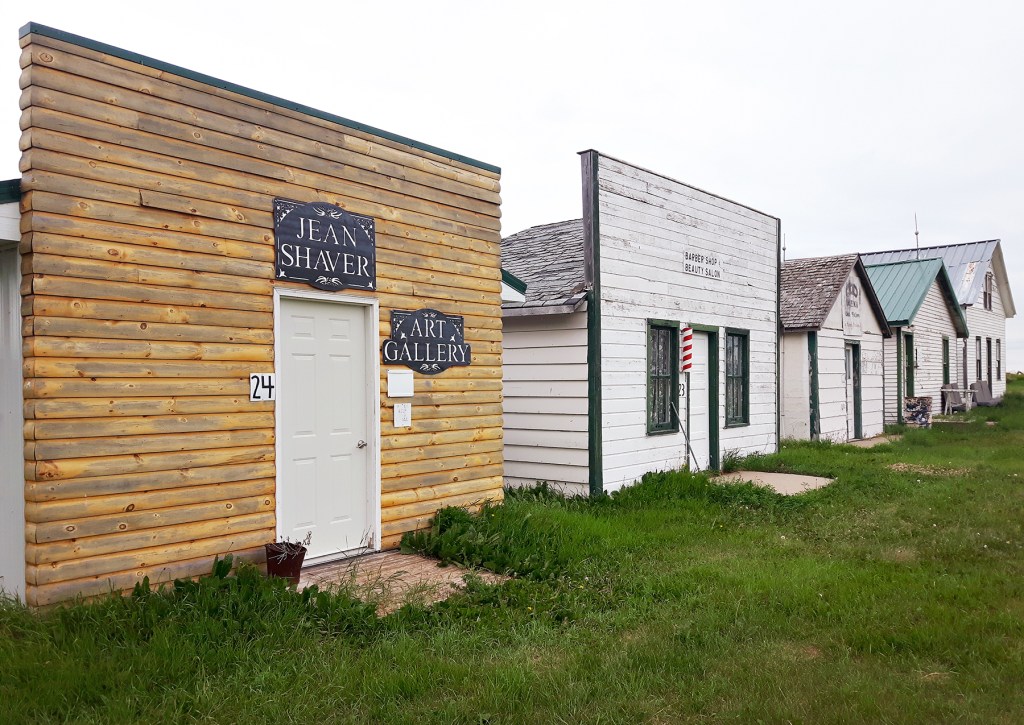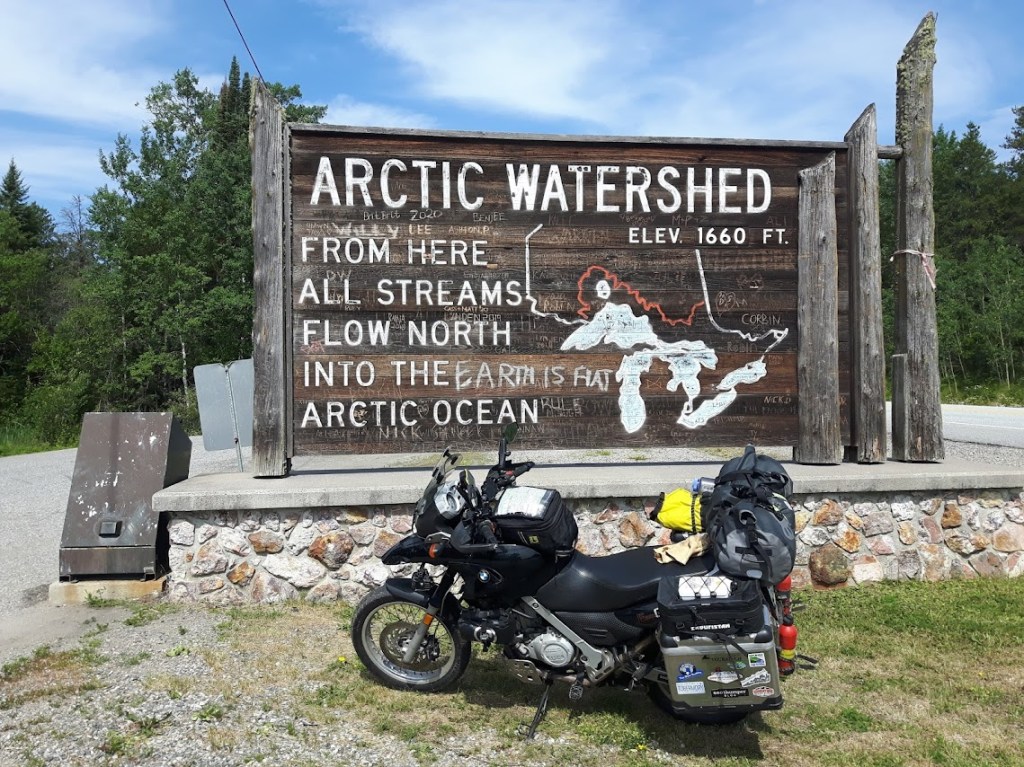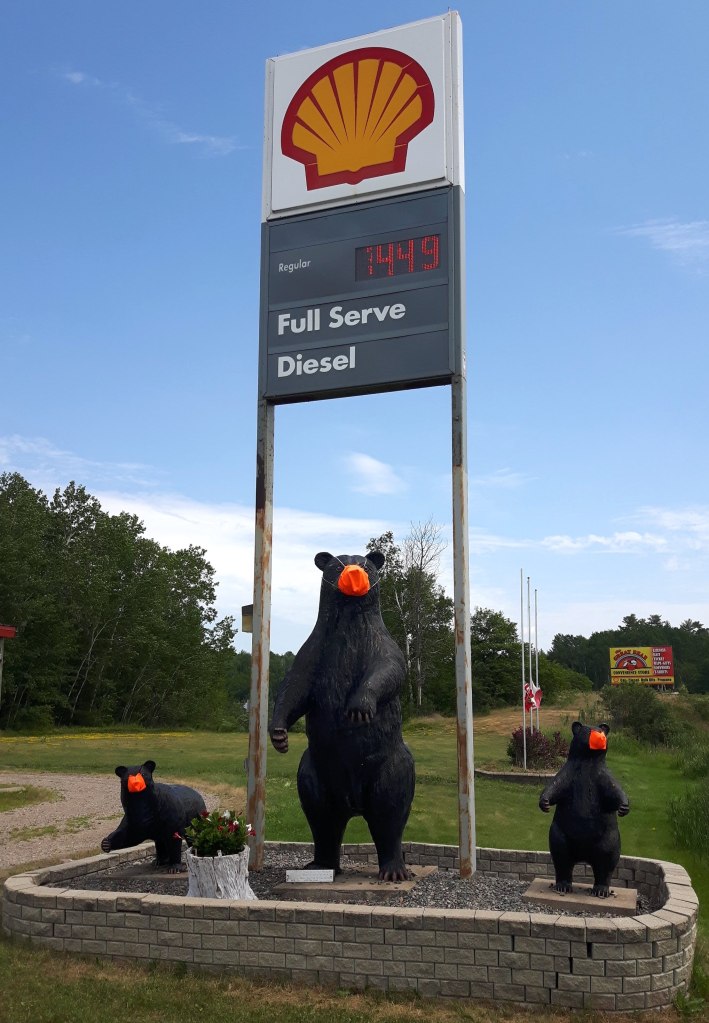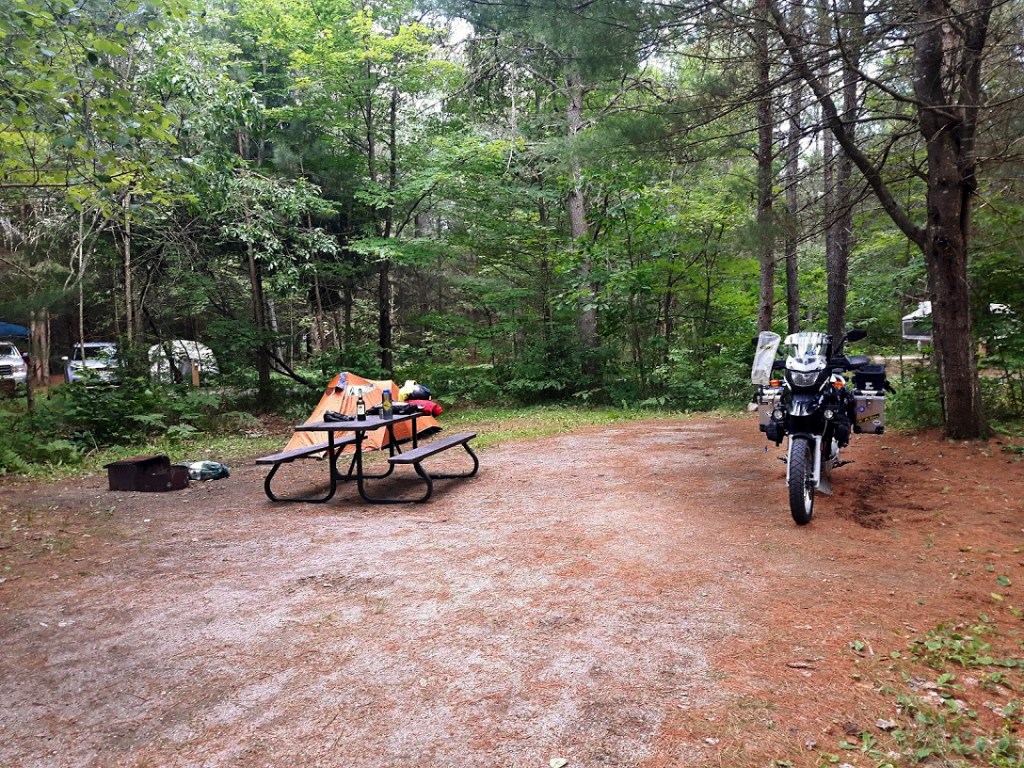I blast through Manitoba but savour Saskatchewan.

Of all the geographical regions in Canada, I was most excited to experience the Prairies. That probably sounds strange to many. Before leaving on this trip, I’d heard others say that prairie roads are flat and straight and mind-numbingly boring. But the Prairies were not only the one Canadian region I hadn’t yet visited in my lifetime, but they are also Big Sky Country, and I’m a Gemini, an air sign, so I like the sky. No wonder I’m also a flight enthusiast.
Provincial Covid restrictions meant I couldn’t stop in Manitoba except for food and gas, and with that in mind, I didn’t even stop in Kenora on my way out for the requisite photo-op with Husky the Muskie. That would have to wait for the return leg of my tour. I hit the highway, brought the bike up to 120 km/hr, activated my Kaoko throttle lock, and didn’t stop for hours on end. It’s not the Prairies that are mind-numbing, but the super-slab highway.
I discovered a few favourite positions on the bike to cover these miles. My favourite and go-to position was right hand on the throttle and left elbow on the tank bag. This “lean-in” look not only made me look distinguished on the bike but also saved my back as well as cut down on wind noise. There was also left hand on the left grip and right arm anywhere but on the throttle, usually dangling down by my side. Even with my throttle lock, I developed tingling in my right hand from the hours of vibration transmitted up through the handlebars, and this position gave it some relief. It’s not just the mind that goes numb on a big thumper with adventure tires. And when my legs needed a stretch, there was the Harley cruiser position. I would lift my legs up and rest them on the little Giant Loop Possibles Pouches strapped horizontally to my crash bars. Those bags became my highway pegs. 6 hours of 5000-rpm riding is not really touring but moving the bike from Point A to Point B, which was exactly the intent of Manitoba’s Covid restrictions.

The only relief came at Winnipeg on the ring-road, Highway 101. For some reason, my GPS decided that, enough was enough, and it would mercifully divert me, 3/4-way through the ring, off onto Highway 221 and then the 26. What a difference the secondary highway makes! It meant a few stretches of gravel road, but the tank-slapper I received on one section (a result of my bent rim, I would discover later) was preferable to another kilometre of the Trans Canada. I was closer to the land and passing through small towns with history. On one “roadside break,” I discovered this old caboose and wandered back through a field to find more quintessential prairie artifacts.


Shortly before Poplar Point, I noticed a sign stating something like “Celebrating 100 Years of Hockey” and then a historical marker. I naturally had to go explore and arrived at this historic hockey rink.

Soon I was routed back onto the Trans Canada and the rest of the day was more of the same. The only thing that made it bearable was knowing there would be a TV and bed waiting for me just over the Saskatchewan border; I had decided to take a hotel room in Moosomin—a rare luxury when I travel. After a long hot day of highway riding, a cool shower, hamburger, and more mind-numbing TV in bed would be just the thing.

The only time my bike burns oil is at high revs, so after the kind of day of riding it had been, I thought I should check it. Unfortunately, checking the oil level on this bike is not as simple as letting it settle in the sump and pulling the dipstick. That’s because the crafty German engineers gave it a dry sump system, so oil level is a product of a) amount of oil in the bike [duh!], b) temperature of oil, c) ambient temperature, d) temperature of engine, e) altitude, f) lunar cycle, and g) bike’s direction relative to True North. It was hot, and the engine was hot, and so was the oil, so I let the bike sit for a bit while I checked in at the hotel. That only took a few minutes, but when I checked the level, it was missing about 3/4 of a quart! Yipes! I thought that was a lot, and a bit concerning, but I added it nonetheless from the quart I was carrying.
The next morning at my first rest stop I checked it again and now it was high—really high. Damn! I guess the bike did not burn as much oil as I’d thought, or perhaps I waited too long before checking it at the hotel. Guessing aside, I knew I had to get oil out of it now or risk damaging the seals. What was there to do but parking-lot maintenance. Out came the tools and off came the body panels. I was at a gas station with adjoining convenience store, so I ransacked the washroom for paper towels and dug an empty windshield washer fluid container out of a garbage bin, then drained some oil out of the upper holding tank. I did my best guess and took out about half a quart. The level was now within range and I put everything back on the bike and rode on in search of somewhere to deposit the used oil. Fortunately, in these parts, the ubiquitous Co-op gas stations have oil drop-off containers.
Now I was ready to ride, and what a ride it was! I was headed to Grasslands National Park (East Block entrance) and my GPS routed me along Highway 13, which is a different world from the Trans Canada. What a joy finally to be seeing some of Saskatchewan. While passing through Ogema along the 13 I saw a sign for Deep South Pioneer Museum. Always curious to learn something about the history of the places I’m riding through, I decided to take a look. Of course it was closed for the usual reason, but I was able to walk through the grounds and check out some pretty old machines.
Further west along the 13 I saw a sign for Horizon, and from the little bit of research I’d done, I knew there were some dilapidated grain elevators there so decided to make a detour. When driving back out to the 13, I passed this quaint little chapel. They are everywhere in Saskatchewan—spartan clapboard churches that are very different from the heavy stone exteriors and ornate architecture of Quebec churches. I could suggest that’s indicative of the difference between prairie folk and Quebecers . . . but won’t.

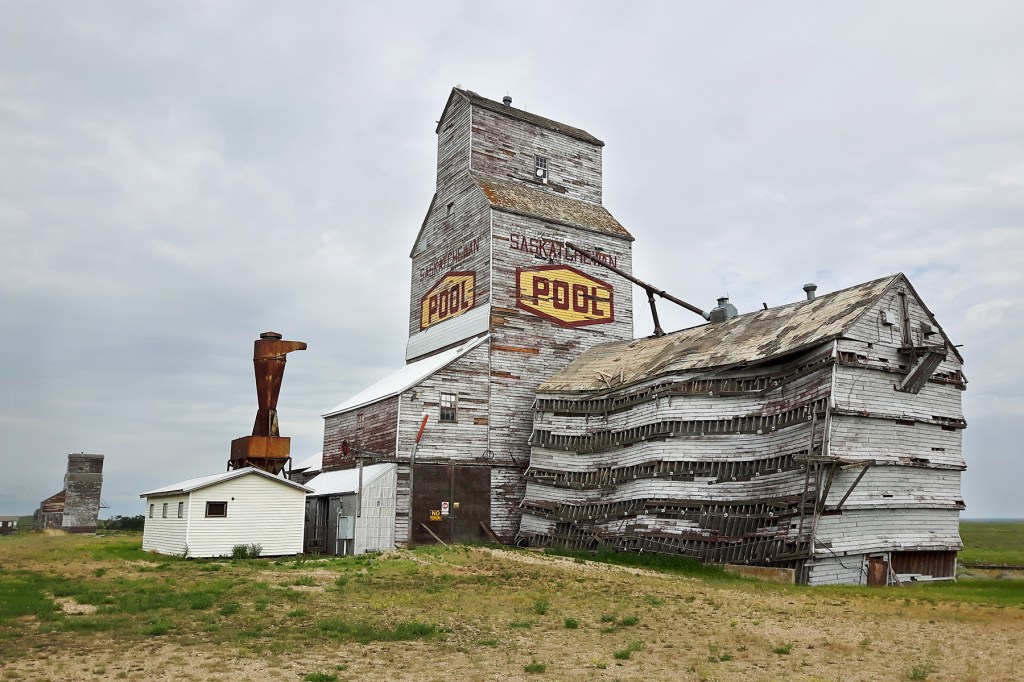
The riding got better once I turned south onto 36 and even better on the 18. By now it was the golden hour, and the twisty road rose and dipped over the amber, grassy hills. Who says Saskatchewan is flat? It seemed like I had the road to myself except for mule deer that scurried away across the barren fields and a coyote that froze and glared as I passed. Was I in heaven? No, actually just in southwest Saskatchewan. I fell in love with this region. It was one of the discoveries of the entire tour and I’m looking forward to going back as soon as I have the chance.
The only thing I didn’t like about Saskatchewan was the gravel used on their secondary roads. They use small brown stones similar in shape, size, and rolling behaviour as marbles. It’s fine as long as you stay in the tire tracks, but if you get into the deeper stuff that collects between those tracks, you are in for a treat. I didn’t have the best tires for this stuff, and it didn’t help that my front wheel had a wobble, so there were a few times when I thought I was going down. In such cases, the old adage “If in doubt, throttle out” was not going to help me. And with the bike fully loaded, getting my weight back did not lighten the front end one bit. I found I just had to clutch in, coast, let the bike go where it wants to go, and hope for the best.
When I arrived at the park, I mentioned my dislike of those stones to the young lady at registration.
“Yeah, I know what you mean,” she said. “When I first moved here, I ended up in the ditch.”
“Oh, you ride too?” I asked.
“No, it was in my car.”

But don’t let me put you off visiting the park. It is very remote, as you can see from the photo above, and you get the sensation of what it must have felt like to travel by wagon across the prairies. You are completely exposed, and I could hear the coyotes yelping in the distance at night. The wind is fierce and relentless, so cooking is a challenge, but the badlands are spectacular, especially at sunset. There is a 20 kilometre single-lane loop along the top and I was lucky enough to do it at sunset. It doesn’t get any better than that.

The next morning I decided to head on over to the other side of the park. I’d heard that the west entrance at Val Marie is very different so worth a stop. Now what do you do when road signs point one way and Google Maps tells you another? It’s not that I have an abiding faith in modern technology, but I decided to follow my GPS because it showed a route through the park, and I thought it would be much more interesting than going back out to the 13 and riding asphalt.

The road looked pretty doable at first and I enjoyed the true adventure riding. Four stags crossed the road in front of me and, one by one, in what seemed slow-motion, leapt the bordering fence and headed majestically across the open countryside. That kind of sighting was the reward, but the cost was more of the infamous gravel and, then worse, sand—deep sand. It’s not fun riding a fully loaded bike through sand, but I was committed now, and to make matters worse, my fuel light was on and I didn’t think I had enough gas to get me back out the other way, even if I wanted to bail. I pursued on and the sand in the valleys turned to two-track dirt on the hills. The road deteriorated further, I was told to turn off that “road,” and I found myself facing a gate. Like I said, adventure riding is about facing each challenge as you encounter it. Now I was in the middle of a vast, remote park; I hadn’t seen a soul in about an hour of riding; I was almost out of gas; and I was facing a closed gate.
I got off the bike and untied the gate, which thankfully wasn’t locked. I swung it open, rode through, stopped, closed and tied it again, then rode on. But as I pulled away, I heard a terrible grating, scratching sound like metal on metal. I’d ridden through barbed wire! Someone had strung barbed wire across the road on the other side of the gate! Clearly I was not where I was supposed to be but had no choice now but to continue. I untangled myself and the bike from the wire and rode on, half expecting to hear gunshots. It was lucky I hadn’t received a puncture from the barbs.
Just when things couldn’t have looked worse, my GPS announced, “In 8 kilometres, turn left.” Ugh! But it’s always darkest before the dawn, and just when I thought I was riding myself into serious trouble, there was another chapel in the middle of nowhere—a good sign—and then the road got better and resembled more a road, and before I knew it I was back out on the 18 again. It was asphalt from here on.

I popped out at McCord and filled up at the local gas station there. Across the street were these old pumps next to a local museum which was . . . well, you know.

There is a Visitor Information Centre at the West Block and I learned some interesting information about the region. For example, I discovered that they get an average annual rainfall of only 30-35 cm, half of it in the summer in thunderstorms in June and July, and about a third in snowfall. This really is a desert climate! I also discovered that rattlesnakes are common and that you can hike up the nearby Eagle Butte. Normally those two clauses would be incompatible but I had adventure riding boots on so decided to do it, just for the view. A sign at the trailhead said the buzzing sound you often hear along the trail are rattlesnakes, but the grasshoppers in this region make a similar buzzing sound by slapping their wings together in flight, just to mess with you. The whole experience—climbing a desert mountain mid-summer wearing adventure boots amid rattlesnakes and flying, buzzing insects—is highly recommended. Once at the top, the view was worth it all, but not captured very well by the camera.

By now it was mid-morning. I wanted to stay and explore this fascinating geography some more but still had seven hours of riding to get to my destination, Calgary. Marilyn had reserved an AirBNB for us and I was looking forward to seeing her and sleeping in a bed. I hit the highway again and before long I was at the provincial border.

Now I had a few days to rest the body, do laundry, eat and drink well, and socialize with friends and family before we would hit the road together on the next leg of the trip.

